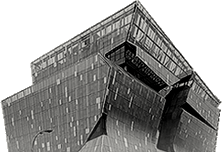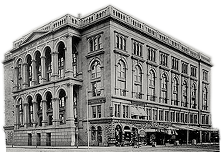Research Labs
Chemistry
Civil Engineering
Asphalt (SUPERPAVE)
SUPERPAVE is the acronym for Superior Performing Asphalt Pavements. SUPERPAVE was developed under the Strategic Highway Research Program (SHRP) and uses performance based testing for classification of the asphalt binder and mix design.
Concrete
The concrete lab is is used for mix design, pouring, curing and testing of concrete specimens and members. The lab has the capability to meet the special concrete mixing requirements for high-strength concrete using super-plasticizers or other additives.
Environmental
This facility is used for water and wastewater analysis, soil analysis, environmental engineering, hazardous waste analysis and treatment.
Fluids and Hydraulics
Used for research on in-stream hydrokinetic energy systems, flow accelerating flumes, and vertical-axis turbines. An additional area of research in this Lab is the generation of energy from ocean waves.
Materials and Structures
This laboratory houses the MTS 810 System that is capable of performing a wide variety of standard materials tests. and is used for solid mechanics, properties of engineering materials, structural engineering, study of dynamic response, and concrete technology.
Soil Mechanics
This lab allows for experiments in soild mechanics including, but not limited to, water content, specific gravity, grain size distribution (both mechanical with sieves and sedimentation with the hydrometer), consistency limits, standard and modified Proctor density tests
Electrical Engineering
Microlab
A general-purpose facility of PCs and workbenches for completing group assignments and for working on computer-related projects
Integrated Circuits
Integrated Circuit Engineering laboratory was established in 1994 with state-of-the-art computer-aided design (CAD) tools, computer platforms and their peripherals for the design of VLSI (Very Large Scale Integration) circuits.
Units Operation
Provides chemical engineering students the opportunity to observe, analyze and apply their engineering knowledge and training to the operation of equipment and processes commonly found in many chemical industries.
Mechanical Engineering
Materials Engineering
This lab's capabilities include tensile, fatigue, and hardness testing; heat treating; failure analysis using optical microscopy techniques, soft tissue testing, and a range of prototyping tools for the design of low-cost open-source hardware
Laboratory for Energy Reclamation and Innovation
Established in 2006 the lab is dedicated to addressing energy problems in the developed and the developing world through bold design
Mechatronics
Mechatronics combines mechanical engineering and electronic control using a systems perspective for the design of products and processes.The Mechatronics Laboratory provides space for both hands-on learning and research purposes with an emphasis on design and application of mechatronics and control systems theory.
Manufacturing and Industrial Robotics (Rapid-Prototyping)
This laboratory has evolved into a well equipped instructional environment capable of supporting courses in the areas of product development and general computer-aided engineering disciplines.
Vibrations and Acoustics
Extensive testing equipment and instrumentation includes various modal impact hammers, ICP force sensors, signal conditioners, five electrodynamic shakers, and PCB Piezotronics and Bruel & Kjaer seismic, tri-axial, and uni-directional accelerometers. It also includes a 520 cubic foot full-coverage anechoic chamber, the only one in New York City.
Interdisciplinary Labs
Autonomy Lab Interdisciplinarity is at the core of Autonomy Lab. The lab combines efforts from the university’s three schools: Architecture, Art, and Engineering. The collective focus of the lab is on solving problems involving the autonomy of cities and communities by searching for design breakthroughs in related fields that concern an autonomous and sustainable structure.
Autonomy in this case involves autonomous systems of varying scales: the site of the smart city, the site of the body, and methods of sustainable agriculture. The lab is not limited to these three examples, efforts include exploring other autonomous and connected systems through various digital, physical, and natural methods of communication and study.
Maurice Kanbar Center for Biomedical Engineering
Open to all Cooper Union faculty and students working on bioengineering projects requiring equipment and space for tissue culture, genetic engineering, biomechanics and related research




